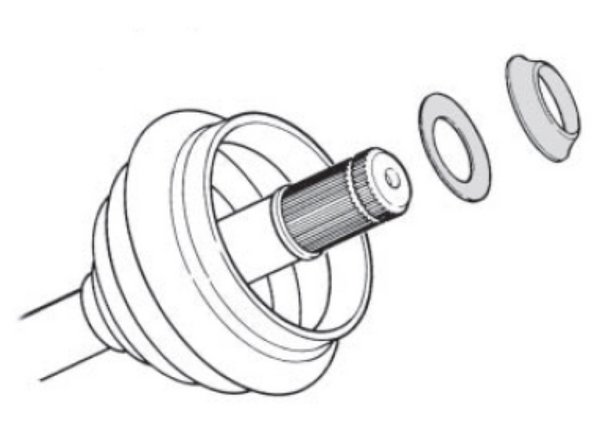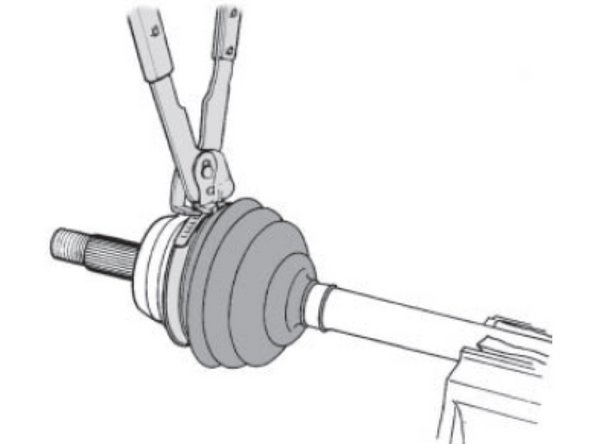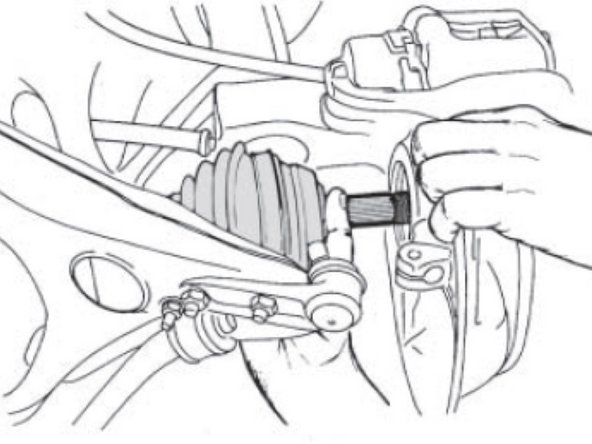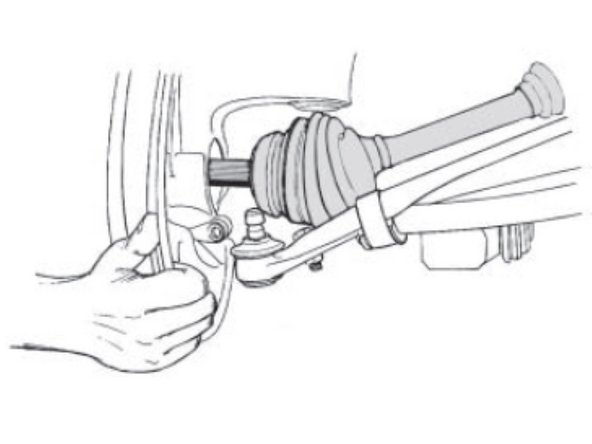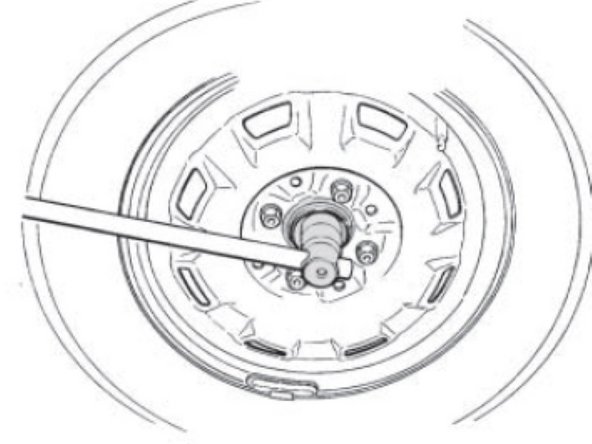Introdução
Substituir uma Junta Homocinética Fixa requer alguns cuidados e ferramentas especificas.
-
-
Com o veículo apoiado no chão, solte a porca do semi-eixo e os parafusos da roda; Com o veículo suspenso, remova a roda;
-
Solte as porcas do pivô e do terminal de direção; Utilizando um Extrator , remova o pivô e o terminal;
-
Retire os parafusos que ligam a torre de suspensão a manga de eixo;
-
Com o auxilio de uma alavanca, force a bandeja para baixo para desacoplar o pivô;
-
Puxe a manga de eixo para liberar a Junta Fixa, caso necessite, use um martelo de poliuretano. Cuidado com o Sensor do ABS;
-
-
-
Remova a braçadeiras e afaste a coifa da Junta Fixa;
-
Utilizando um Extrator de Junta Homocinética: Prenda a parte ajustável no rebaixo do Semi-eixo (onde fica posicionado a braçadeira da coifa), coloque a porca da Junta Fixa e aperte até a liberação da trava;
-
Remova a Junta Fixa, o espaçador, a mola prato e a coifa;
-
Limpe o Semi-eixo para evitar a contaminação da graxa.
-
-
-
Monte manualmente a Coifa, a mola prato (com a parte côncava, voltada para o lado de fora da articulação) e bucha espaçadora (com a face plana voltada para a mola prato);
-
Aplique graxa na junta, começando pelo fundo (usando o bico da bisnaga) e preencha toda cavidade, movimente a gaiola para facilitar o processo;
-
Posicione o estriado da Junta Fixa, no estriado do Semi-eixo, utilize um martelo de poliuretano e bata na extremidade na Junta, até encaixar o anel trava na ranhura do Junta; Verifique se a Junta esta firme n o eixo, puxando pelo corpo;
-
Aplique o restante da graxa na coifa;
-
Fixe a abraçadeira maior com o auxilio do Alicate especial; Antes de fixar a braçadeira menor, utilize uma chave de ponta roliça entre a coifa e o eixo pra entrar um pouco de ar. Fixe a braçadeira menor, posicionando no rebaixo do eixo.
-
-
-
Coloque a ponta da Junta Fixa no Cubo. Encaixe a Manga de eixo no Pivô e posteriormente os parafusos da torre de suspensão. Instale o terminal de direção;
-
Aperte as porcas dos Pivô e do Terminal de direção.
-
Coloque a nova porca da Semi-eixo, não reutilize a porca antiga. Posicione a Roda e os parafusos da roda.
-
Com o veículo apoiado no chão, aperte as porcas da roda. Aplique 230 Nm na porca do Semi-eixo.
-
-
-
Sob quaisquer circunstâncias deve-se tentar qualquer conserto ou manutenção para o qual não foi treinado ou se não possui as ferramentas e equipamentos para o conserto.
-
Sempre use os óculos de segurança adequado quando fizer algum tipo de manutenção. Não usar os óculos de segurança pode resultar em ferimento e/ou perda parcial ou completa da visão.
-
Seja sempre cuidadoso ao trabalhar com produtos que tenham pontas afiadas.
-
-
-
Parte importante do trabalho e da própria operação da sua oficina é o descarte correto dos produtos que serão substituídos. Faça a sua parte e juntos contribuímos para um futuro sustentável.
-
Saiba mais em http://www.spicer.com.br/danatureza
-
Evite danos e desgastes prematuros, após a instalação do Semi-eixo, verifique a geometria do veículo.
Evite danos e desgastes prematuros, após a instalação do Semi-eixo, verifique a geometria do veículo.






